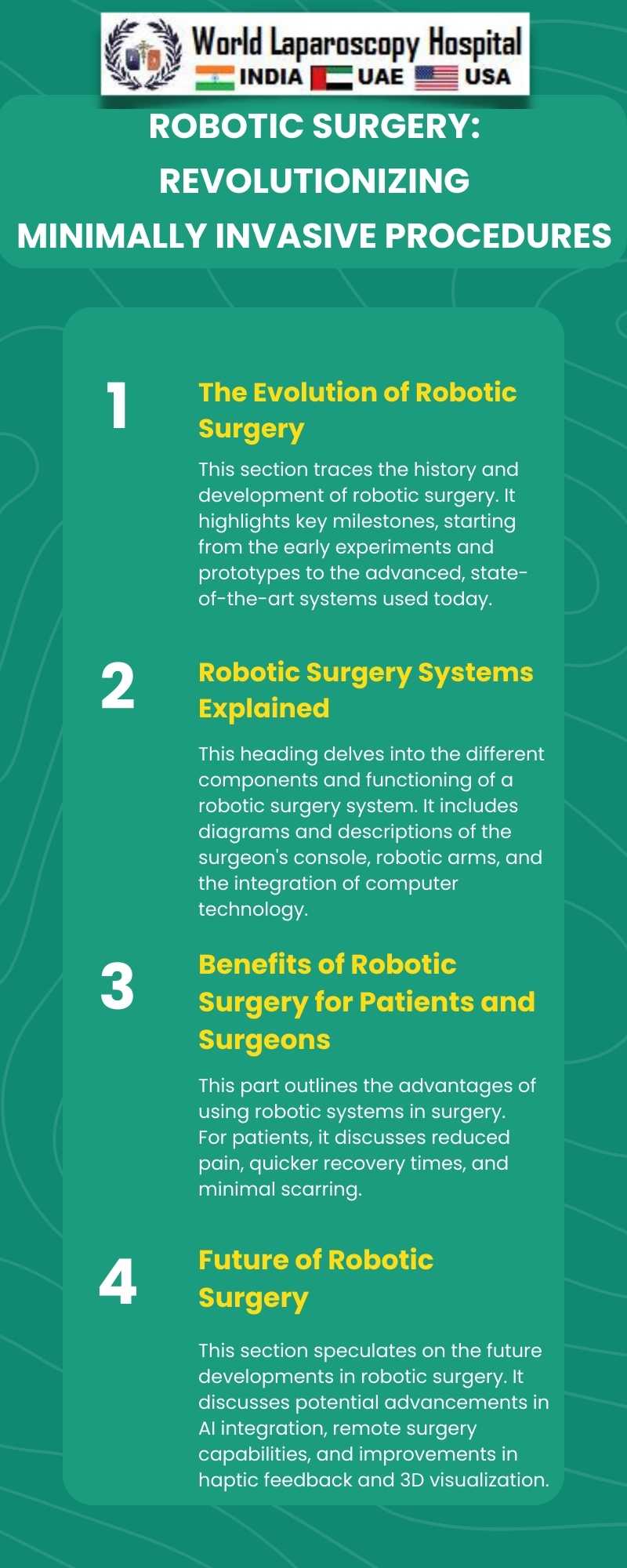The advent of robotic surgery marks a significant milestone in the field of medical science, particularly in minimally invasive procedures. This essay delves into the evolution, advantages, and future prospects of robotic surgery, highlighting its transformative impact on healthcare.

The Evolution of Robotic Surgery
Robotic surgery, an innovative technology, has roots tracing back to the late 20th century. It emerged from the need to enhance precision in complex surgeries and to overcome limitations of traditional minimally invasive techniques. The introduction of systems like the Da Vinci Surgical System revolutionized the approach towards surgeries by providing enhanced dexterity, precision, and control beyond human limitations.
Advantages of Robotic Surgery
1. Enhanced Precision and Control: Robotic systems offer surgeons unparalleled precision, reducing the risk of complications and improving patient outcomes.
2. Minimized Invasiveness: With smaller incisions, patients experience less pain, lower risk of infection, and quicker recovery times.
3. Improved Visualization: High-definition, 3D imaging provides surgeons with a detailed view of the operative area, aiding in more accurate and effective surgeries.
4. Greater Dexterity: The robotic arms can maneuver in ways that human hands cannot, allowing access to hard-to-reach areas without the need for large incisions.
5. Reduced Surgeon Fatigue: Robotic systems alleviate physical strain on surgeons, potentially enhancing performance in lengthy procedures.
Challenges and Considerations
Despite its benefits, robotic surgery faces several challenges. The high cost of robotic systems and the need for specialized training for surgeons are significant barriers. Additionally, there are concerns regarding the learning curve associated with mastering these technologies and ensuring widespread accessibility.
The Future of Robotic Surgery
The future of robotic surgery is promising, with continuous advancements in technology. We anticipate more compact, versatile, and intelligent systems, along with increased integration of artificial intelligence and machine learning. These advancements could lead to more autonomous surgical procedures and broader applications in various medical fields.
Conclusion
Robotic surgery represents a revolutionary step in minimally invasive procedures, offering numerous benefits over traditional techniques. While it faces certain challenges, ongoing advancements and increased adoption suggest a bright future. This technology not only enhances surgical precision and patient outcomes but also opens new horizons in medical science, paving the way for more innovative and effective healthcare solutions.